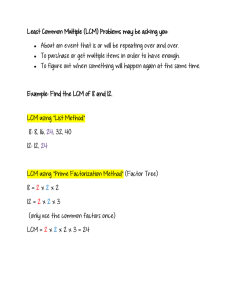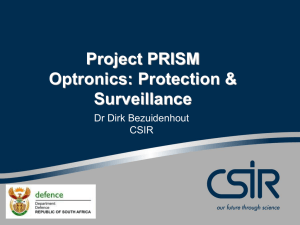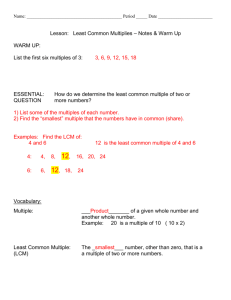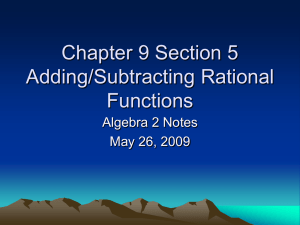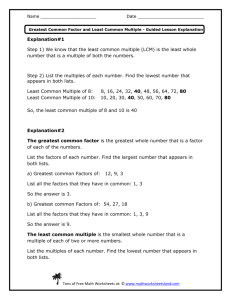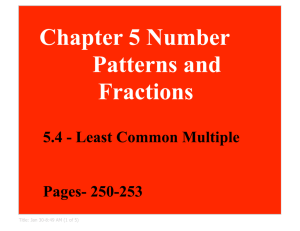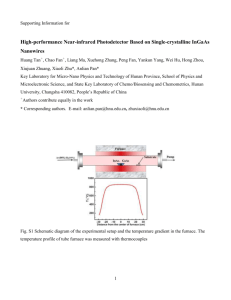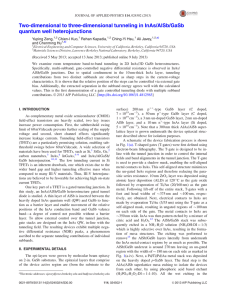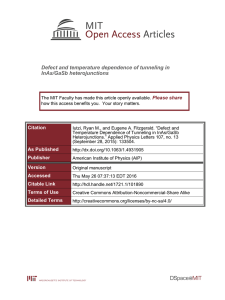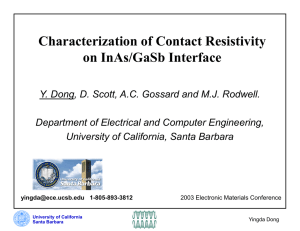Lateral Composition Modulation in InAs/GaSb superlattices
advertisement
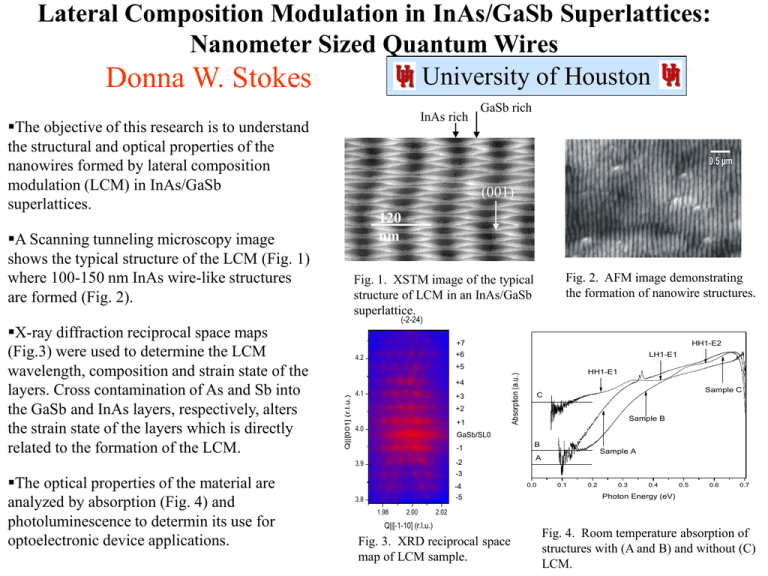
Lateral Composition Modulation in InAs/GaSb Superlattices: Nanometer Sized Quantum Wires University of Houston Donna W. Stokes InAs rich The objective of this research is to understand the structural and optical properties of the nanowires formed by lateral composition modulation (LCM) in InAs/GaSb superlattices. (001) 120 nm A Scanning tunneling microscopy image shows the typical structure of the LCM (Fig. 1) where 100-150 nm InAs wire-like structures are formed (Fig. 2). (-2-24) +7 HH1-E2 +6 4.2 LH1-E1 +5 4.1 +3 +2 +1 4.0 HH1-E1 Absorption (a.u.) +4 Sample C C Sample B GaSb/SL0 -1 -2 -3 3.9 The optical properties of the material are analyzed by absorption (Fig. 4) and photoluminescence to determin its use for optoelectronic device applications. Fig. 2. AFM image demonstrating the formation of nanowire structures. Fig. 1. XSTM image of the typical structure of LCM in an InAs/GaSb superlattice. Q||[001] (r.l.u.) X-ray diffraction reciprocal space maps (Fig.3) were used to determine the LCM wavelength, composition and strain state of the layers. Cross contamination of As and Sb into the GaSb and InAs layers, respectively, alters the strain state of the layers which is directly related to the formation of the LCM. GaSb rich -4 -5 3.8 1.98 2.00 B Sample A A 0.0 0.1 0.2 0.3 0.4 0.5 0.6 0.7 Photon Energy (eV) 2.02 Q||[-1-10] (r.l.u.) Fig. 3. XRD reciprocal space map of LCM sample. Fig. 4. Room temperature absorption of structures with (A and B) and without (C) LCM. Lateral Composition Modulation in InAs/GaSb Superlattices: Nanometer Sized Quantum Wires Donna W. Stokes University of Houston Education and Outreach: During the spring semester a special topics course entitled ‘Experimental Techniques in Solid State Physics” was offered. This course entailed the collaboration of two graduate students (Julia Wickett and Priya Chinta) and one undergraduate (Carol Voight) where various technique for structural, electrical and optical characterization of semiconductor were explored. We also participated as judges for the Houston Engineering and Science Fair in Houston, Texas. As part of a Martin Luther King Visiting Professor at Wayne State University, the PI spoke to a 7th and 8th grade science class at the Detroit Academy for Science, Mathematics and Technology. Several of those students and their teacher attended a technical colloquium which was presented to the Department of Physics at Wayne State University. The PI lectures on nanotechnology and it’s importance to our future to 8th grade students at the Detroit Academy for Science, Math and Technology in Detroit, Michigan.

